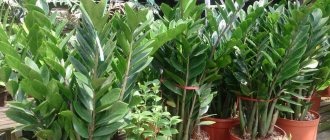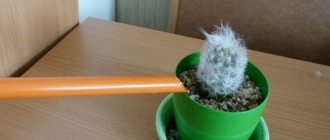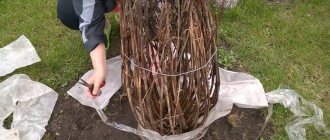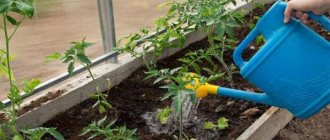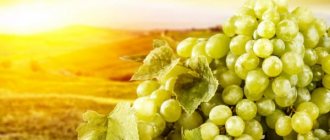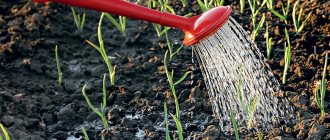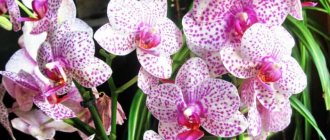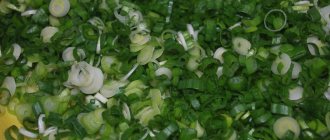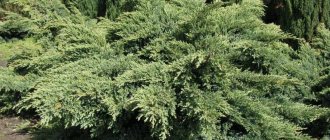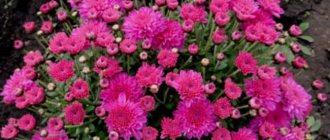Even experienced gardeners were once beginners and mastered their favorite hobby with trepidation, worried about harming not only fruit crops, but also the greens used for preparing various dishes and snacks. And if our readers are among the beginners who have decided to start growing small, they should know the answer to today’s popular question: “What to do to prevent onions from turning yellow, and why does this problem arise even with greenhouse growing methods?”
Unfortunately, most edible greens and onions, including, are susceptible to disease. Yellowing, like other garden diseases, occurs due to many reasons, and most importantly, it does not go away without leaving a trace. To cope with the problem, you need to intervene in time, then the crop will not die, and the time spent on the garden will not be in vain.
Why do onions turn yellow?
To find out why onion leaves turn yellow, you should know that this variety of greens, suitable for food, is not a capricious crop. Regardless of climate changeability, it can easily withstand prolonged rains and sweltering sun. Onions are difficult to spoil by overwatering and fertilizing, prolonged drought and lack of airiness in the soil. However, even despite increased immunity, many gardeners often encounter the problem that the feathers of young onions in the garden turn yellow. The described illness may not look identical. Some gardeners note yellow pigmentation on a healthy, dark green color, while others are faced with drying out of the tips and further death of the crop. Symptoms of the disease can vary, just as they vary from person to person. The main thing is to notice the yellowness in time and decide what was the root cause:
- change in weather (cold weather or sweltering heat);
- diseases;
- lack of nitrogen fertilizers in the soil;
- pests affecting greenery.
Why young onions turn yellow in the garden or in a greenhouse and do not grow: diseases
It is better to throw out affected onions immediately, especially if you grow the plant in a greenhouse, because the disease can spread to other bulbs. But it will no longer be possible to cure a dried plant. To prevent the appearance of yellowness, you need to take into account some factors that can cause the plant to dry out:
Pest beetles that can carry diseases.
The presence of fungal diseases of the plant.
Regular care, hilling and ridding the vegetable of weeds.
The activity of sunlight also affects the growth and development of the vegetable.
Lack of nitrogen in the soil.
You need to combine watering with mineral fertilizing.
It is worth stopping watering 1 month before harvest.
Also, do not forget about timely fertilization of the soil and clearing of weeds.
Tips for the garden, vegetable garden and flower garden
How to water flowers during vacation or long absence
Pear diseases and the fight against them with photos of what the leaves look like
Watering strawberries during flowering and fruiting
Yellowing of feathers due to drought
The main reason for the yellowing of onions, according to statistics, is long-term drought resulting from the abnormal heat prevailing in the region. The lack of precipitation and regular watering, necessary to moisten the soil, combined with high air temperatures, lead to a slowdown in the movement of juice in the greens, and as a result, drying of the tips. However, even though the onion feather turns yellow, the growth of mass does not stop, but continues without slowing down.
The second reason for the yellowing of feathers is also associated with fluctuations in weather temperature. But it happens mostly due to the fault of the gardener. Ignoring the landing dates according to the region and the lunar calendar leads to early landing. As a result of the error, temperature fluctuations are observed - from stable cold to sharp warming. The fragile root system and young shoulder straps do not perceive climate change well, expressing their dissatisfaction with yellowing.
Why does the onion shoot and quickly turn yellow: causes, treatment
The arrow is a peduncle on which seeds are formed after flowering. It is necessary for propagation, but is dangerous for those varieties that require a bulb when planting. The bow can shoot an arrow in the following cases:
- The size of the planting bulb is more than 3 cm
- Sudden temperature changes or increased soil moisture
- If the soil has not yet warmed up when planting.
The bow shoots an arrow quickly.
To avoid the appearance of arrows, you must adhere to the following rules:
- Choose the right planting material. A bulb less than 1 cm in diameter is least likely to shoot arrows. Very large - almost always.
- Do not plant onions when the soil is still cold; it is not recommended to do this until April 25
- 2-3 weeks before planting, place the bulbs on a wooden surface and on the radiator
- Store small planting material cold. Which involves storing vegetables at a temperature of 1-3°C below zero.
If the bulb shoots an arrow, then it should be cut off to the very base. There is no need to be upset about such arrows, because this product is ideal for canning and marinades.
What to do and how to treat?
If there is an established drought in the region, it is recommended to take care of regular watering. In the absence of rain, greenery must receive moisture, otherwise the plant will begin to die after yellowing. If you don’t have the opportunity to regularly water your onions, you should think about an automatic humidification system. For this purpose, purchased automatic watering options or those made with your own hands from improvised materials are suitable.
If the yellowing of the onion could not be prevented, it is worth considering folk recipes that allow you to restore a healthy appearance, forgetting about the yellowness of the feather.
No. 1 - wood ash
In dry climates, many gardeners restore the plant's appearance with regular watering and wood ash. The fertilizer is used twice a week, scattering the additive around the bulb at the rate of 450 g of ash per 1 square meter. meter.
No. 2 - ash
The second method does not restore yellowed onions, but only helps the plant acclimatize to hot weather. After spraying the bulbs with an ash solution, new feathers grow healthy and beautiful.
To prepare the fertilizer, take 400 g of ash and one bucket of water. The components are mixed until smooth and left to infuse for several days at room temperature. Afterwards, the ash solution is poured into a sprayer and sprayed onto the bulbs of growing greenery.
How to feed onions if they turn yellow due to weather conditions
If the reason for drying out is return frosts, then the care of the beds does not change in any way. The feather will grow back, the dry tips in the general green mass will be invisible to both the owner and the plant. If the weather is dry for a long time, the area needs to be watered by sprinkling for 2-3 days in a row.
Latest articles about gardening
To restore the strength of damaged plants, sprinkle the ground between them with ash at the rate of a half-liter jar per 1 square meter or spill with an ash solution. To prepare it, you need to dilute the same amount of ash in a bucket of water and leave for 3-4 days, stirring regularly. The yellowed tips will no longer turn green, but the plant will recover from stress faster.
If onions turn yellow due to pests
The yellowing of onion feathers may be associated not only with the climate that came to the region. The list of root causes includes the plant's reaction to pest infestation. Insects that settle on the root system or bulbs affect the overall health of the greenery. In a short time, yellowing appears due to rotting of the root crop and roots.
Four known pests that affect not only onions, but also vegetables can cause such a disease. Stem nematode, tobacco thrips, onion fly and moth are often found in Russian regions even with proper care. To save the crop, it is recommended to choose comprehensive treatment measures that include remedies for each pest.
Prevention of yellowing of onions in the garden
Preventive measures will help to predict the danger and eliminate it before the entire crop is damaged. Fertilizing the soil should be done before planting nigella or other varieties of onions. As it grows, the upper layers of the soil are fertilized with humus, dry hay and nitrogenous substances.
It’s not difficult to buy fertilizer, but making your own will save time and money. The gardener will be 100% confident in its quality and safety.
Watering onions is only part of caring for a plant that is not only easy to grow, but also healthy to eat. Diseases that also affect root crops are less common, but you should also prepare for them. Pests, parasites and insects destroy vegetables; getting rid of their attack is difficult, if not impossible. During periods of heavy rains, the bulbs suffer and the entire rhizome slowly rots.
Latest articles about gardening
Buldenezh: planting and care in open ground
Yeast as fertilizer for indoor flowers
Ezhemalina: care in autumn and preparation for winter
The leaching of the nitrogenous layer occurs quite often, and it is in the interests of the gardener to worry about the problem with the soil in advance. Prepared fertilizers will help strengthen the root crops and allow you to harvest a good harvest at the end of summer. Onion crops are useful and easy to care for, and planting them should not cause difficulties for humans. Any possible problems are solved without any special financial costs.
Tobacco thrips
This pest affects not only edible greens, but also root crops growing in the ground. Despite its tiny size, the insect feeds on the sap of the plant until the process of decay begins. Like aphids, it is able to move, infecting nearby vegetables and berries.
To protect your garden, when fighting tobacco thrips, it is recommended to treat not only the onions growing in the garden bed, but also other plants nearby. Prevention will help you say goodbye to the insect for a long time, forgetting about the return of the unexpected guest after a week or month.
Detecting this pest is easy. The gardener does not need to take a magnifying glass to find it. It is enough to analyze logically. If the weather in the region is optimal, the plant is provided with proper care, but the onion set is actively turning yellow, which means that thrips have infested the bulbs.
Unfortunately, many gardeners plant already infected bulbs in their garden beds, assuming that all bacteria and pests will die in winter. This opinion is erroneous and certainly does not apply to tobacco thrips. Regardless of winter weather and frosts, the insect does not die, but continues to cause irreparable damage to the bulb since spring.
To cope with the pest, preventive measures must be taken before planting. Alternatively, soak or soak the seeds in hot water for 20-25 minutes, and then transfer to cold water. Such hardening has a good effect on the ripening of greens during temperature changes, and most importantly, it kills thrips.
If it’s too late to talk about preventive measures, you should use specialized tools that help in pest control:
- Aktara;
- Fitoverm;
- Fitosporin - M;
- Alatar;
- Tobacco dust;
- Aktellik;
- Confidelin.
Onion pests
Unfortunately, the problem of yellowing of onion feathers cannot always be solved by adjusting the watering and fertilizing regime. Sometimes the culprit is an infestation of insect pests.
Stem nematode
Are you wondering why the feathers of onions turn yellow and wrinkle? Try ripping open an “unpresentable” leaf. If you find small white thread-like worms inside, you should know that your onion has been infected by a stem nematode, one of the most dangerous onion pests.
Control measures: Unfortunately, only high-quality preventive treatment of seedlings and soil before planting helps in the fight against nematodes. In the summer, when the larvae have migrated from the bulb to the feathers, all that remains is to immediately burn the affected plants in order to prevent the pest from destroying the entire onion crop.
Onion moth
Onion moths lay eggs at the base of leaves or on the soil near onions several times a season. The first generation of these insects begins to harm crops in late spring - early summer. If inside a yellowed onion feather you find small yellowish caterpillars with brown warts, then the problem is an onion moth infestation.
Control measures: Considering that the pest overwinters in the butterfly stage, treating the bulbs will not help prevent damage to the plant. In this case, it is necessary to treat the bed with an insecticide. For example, Iskra Double effect (1 tablet per 10 liters of water, 1 liter of solution per 1 sq.m.).
Onion fly
The onion fly actively infects the plant in the spring - in April-May. The main symptom is when the tips of the onion turn yellow first, and not the entire feather. If you dig up the plant, you can see that the bulb has rotted.
Control measures: Unfortunately, as with most pests, it is easier to scare them away from the garden bed than to try to save already damaged plants. In the case of onion flies, pollination of the rows with a mixture of tobacco dust and sunflower ash, taken in equal parts, will help. For medications, try Alatar. Affected plants are dug up and burned.
In addition, rows of onions can be alternated with rows of carrots - these plants repel each other's pests.
Onion secretive proboscis (weevil)
If the onion feathers have turned yellow and the passages are visible through the skin, the plant is eaten away from the inside by the larvae of the onion secretive proboscis. These are legless yellowish-white caterpillars with a brown head, up to 0.7 cm long.
Control measures: If you notice beetles on the leaves, they can be collected to prevent eggs from being laid in the feathers. As a deterrent measure, it is also useful to mulch the ground around the onion plantings with ash, mustard powder, ground black and red pepper. During the period of beetle settlement, plantings are treated with Alatar or Fufanon-Nova according to the instructions. Plants eaten away by larvae can only be burned.
Onion thrips
Onion (or tobacco) thrips are tiny, up to 1 mm long, but very dangerous pests of all kinds of garden, vegetable and ornamental crops. When affected, whitish spots form on the leaves, which later merge, and the leaf fades.
Control measures: As a deterrent measure, onion planting is sprayed with an insecticide (Iskra, Confidor Extra, etc.). Before planting, the bulbs are disinfected in hot water (immersed in water at a temperature of 45°C for 10 minutes), and then washed in cold water. Damaged plants are burned.
Onion moth
The appearance of this insect is caused by hot, sometimes dry weather. Onion moth spreads quickly, resulting in rapid yellowing of onions. At the beginning of the disease, the tips of the feathers turn yellow, and after one or two weeks the plant dies completely.
The pest can be detected by a simple symptom. If the yellow spots become more active from late spring to June, then there is a high probability that the cause of the wilting was a moth. Flying insects can only be seen with the naked eye at night, when pests begin to parasitize plants.
To get rid of the problem, it is necessary to fight not with adult butterflies, but with larvae deposited on onion bulbs. Only at this age does the onion moth cause harm, affecting the bulb and tops from the inside. As a result of eating, the onion turns yellow and dies, unless the gardener eliminates the cause in time.
Treatment of the plant can be done with chemical or folk remedies. The choice remains with the summer resident. If you don’t want to poison your edible greens with toxins, it is recommended to prefer a mixture consisting of an infusion of tobacco leaves, garlic and ash. The ingredients, taken in equal quantities, are scattered around the plant, and then watered generously. The procedure should be carried out 2 times a week for two to three weeks.
How to use iodine to prevent onions from turning yellow: recipe
Iodine is a well-known antiseptic that is used for wounds and cuts. But iodine is also very popular as a fertilizer.
- Iodine is simply necessary for normal human life and is responsible for metabolism and growth. Plants also need iodine, because it affects productivity, enriches vegetables with vitamin C, and affects taste, color and aroma.
- Medical iodine 5% is suitable for fertilizer. It strengthens the “immunity” of plants, but you need to use it very little, because... Iodine is a toxic substance.
- You need to fertilize the onions with iodine solution in three stages at equal intervals. To do this, you need to dissolve 1 drop of iodine 5% with 3 liters of water. If the plants are weak or damaged, you can increase the amount of iodine to 3 drops per 3 liters of water.
Iodine solution is used for both root and foliar feeding. Iodine helps cope with various fungal diseases, which is quite common among all types of onions.
Onion fly
The most dangerous pest for onions today remains the onion fly. It can parasitize any variety, regardless of taste and aroma. Remains on the greens as long as there is juice in it.
There are different ways to get rid of insects. However, most gardeners prefer a simple method that allows them to expand their greens harvest. We are talking about planting parsley and dill near onions. The aroma of these plants repels onion flies, forcing them to change their place of residence.
If the fly does not want to leave or the damage is so serious that action must be taken immediately, it is worth considering the option of salt and ammonia. To prepare the solution you need to take: 5 liters of water, 100 g of table salt and 10 drops of ammonia. All components should be mixed until the salt is completely dissolved. You can spray the plants with the prepared solution 2 times a week until the problem disappears completely.
Important!
If you want to speed up the process of dissolving salt, you should dissolve it in boiling water.
Folk remedies for yellowing onion feathers
In the arsenal of gardeners, there are a huge number of additional means for treating onion plantings from yellowing. They are time-tested, low-cost, affordable, and give a good effect. In addition, folk remedies are absolutely safe for the health of people, animals and beneficial insects in comparison with some chemicals, but have a detrimental effect on pests and pathogens of agricultural crops. We have already mentioned dusting the beds with tobacco dust, ash and ground pepper, as well as planting repellent plants. Here are some more interesting and simple recipes:
- 5 liters of water + 0.5 kg of baking soda + 1 teaspoon of iodine + a bag of potassium permanganate. When mixed, a concentrated solution is obtained, which must be diluted with water in a ratio of 1:10, and only then water the onions. The positive effect of this treatment is that iodine and potassium permanganate have a detrimental effect on pathogens, and soda deoxidizes the soil;
- 1 glass of diesel fuel or kerosene + 1 glass of wood ash per 10 liters of water. The solution is used for irrigation;
- Pour 200 g of tobacco dust into 2 liters of hot water and leave for 3 days. Then increase the volume to 10 liters by adding water, 1 tbsp. a spoonful of liquid soap and 1 tbsp. a spoonful of ground pepper;
- dilute 3 tbsp in a bucket of water. spoons of ammonia. The resulting solution is poured under the roots of the onion in the evening.
Watering is best done in the grooves made between the rows of onions, since contact of the above compositions, as well as saline solution, on the leaves of the plant can lead to burns.
How to feed onions with yeast
To saturate the soil with nitrogen, potassium, phosphorus and oxygen, to help onions cope with spring problems, and to strengthen the plant’s immunity, yeast fertilizers are used. There are many recipes with yeast, here are some of them:
- Chop nettles and dandelion greens, place in a large container, add water and leave in a warm place, preferably in the sun. Over the course of a week, the vitamin composition is fermented, and it must be stirred periodically. Then add 0.5 kg of raw yeast and leave for another 3 days for fermentation. Add 1 liter of the resulting starter to 10 liters of water and use it to water the onions;
- 10 liters of warm water + 10 g of dry yeast + 50 g of sugar are infused in a warm place for 2 days. Before watering, dilute with water in a ratio of 1:5;
- 10 liters of warm water + 10 g of dry yeast + 2 cups of wood ash infuse for 3 days. Before use, dilute in a ratio of 1:10.
To prepare yeast dressings, you can use not only raw, but also dry yeast
Remember that yeast will have a beneficial effect on the plant only if the soil is well warmed up and the air temperature is at least +20 degrees. Fertilizing at low temperatures will have no effect; the yeast will simply die.
Fertilizing with infusions using yeast can be used no more than 3 times per season. The fact is that yeast increases the acidity of the soil and washes out potassium and calcium.
How to season onions with salt
This folk method of processing onion plantings has been used for a very long time. Its purpose is to protect plantings from onion flies. Prepare a saline solution at the rate of 200 g of salt per 10 liters of water. The effectiveness of the drug will be enhanced by adding a small amount of ammonia or a few manganese crystals. It is recommended to do the first treatment when the length of the onion feather reaches 7–8 cm. During the season, 2–3 treatments will be required, since approximately a month after the first generation of the pest, new larvae are born and will attack the onion.
It should be remembered that frequent application of this solution can lead to soil salinization. It will contain excess chlorine and sodium, which inhibit the growth of many plants.
Video: ammonia and hydrogen peroxide - super products for garlic and onions
Every gardener who knows how and with what to water the onions so that the feathers do not turn yellow can get a rich harvest of strong bulbs and healthy greens. Using proven means and folk recipes to protect crops from diseases and pests, ensuring timely sowing and watering, you can achieve an ideal result. Onion plantings will delight you all summer with their bright green color, and in the fall you will reap a rich harvest!
- Author: Lyudmila Bartasevich
My name is Ludmila. Higher education, graduated from the Minsk Institute of Culture. I live in Belarus. Rate this article:
- 5
- 4
- 3
- 2
- 1
(3 votes, average: 5 out of 5)
Share with your friends!
Stem nematode
The nematode remains a tricky but harmless pest for summer residents for many years. Unlike other insects, it affects only the stems of green onions, without spreading to other vegetable and fruit crops.
Symptoms of damage can be determined by a single sign - the absence of yellowing in nearby plants and root crops.
The stem nematode can live in the soil for several years, without showing itself in any way until the onions are planted.
To combat the pest, it is recommended to use marigold tincture. Its composition completely kills “unexpected guests” without affecting the onion bulb.
For prevention before planting, it is worth completely pouring boiling water over the garden bed, adding a few tablespoons of salt to the water.
How to water onions to prevent worms from turning yellow: remedies, recipes
If there are worms in the onion bed, it is quite problematic to fight them, because they are almost invisible, but the pests cause significant damage to the green onions. You can fight them in the following ways:
- Saline solution: 1 glass of table salt per 10 liters of water, this will even help fight weeds and other pests
- It is important to treat the soil with boiling water before planting - this will destroy pests.
- Before planting, you can water it with a solution of potassium permanganate.
- Wood ash: Sprinkle it over the area before planting onions.
- Another great method is to take 3 kg of tomato tops, pour 10 liters of water, boil, add 50 g of laundry soap, cool slightly and treat the area.
Saving onions from worms
The most important thing to combat pests is as soon as the first damaged leaves appear, this way damage to other plants can be avoided.
Nitrogen deficiency
If there is no worthy answer to the question of why onions turn yellow, the last option remains - a lack of nitrogen in the soil. Hard, not loosened soil often causes yellowing of not only the feathers, but also the tops of many plants. To cope with the problem, you should fertilize with nitrogen fertilizers and loosen the soil after each watering.
Plants growing nearby can also indicate a lack of minerals. Before making a diagnosis, you should carefully examine the soil. If the ground is hard and resembles stone, you should immediately begin to solve the problem.
In addition to fertilizing with nitrogen, many gardeners fertilize onion varieties with bread crumbs soaked in sediment water. Other, but no less high-quality options remain:
1) chicken droppings; 2) slightly sour milk diluted with water; 3) horse manure; 4) spruce sawdust; 5) rotted leaves left after winter.
If the problem occurs selectively and the onion feather turns yellow only in places, you should prefer nitrogen fertilizers - stove ash and potato peelings. In addition, watering must be carried out regularly, exclusively in the evening, when the sun's rays cannot burn the greens.
Having figured out why onions turn yellow and how to help them if the cause is a lack of nitrogen, the gardener will be able to grow a good harvest of healthy greens suitable for consumption. The most important thing is not to miss the moment of drying, allowing the onion to die before it is completely ripe.
Lack of nitrogenous substances
A lack of nitrogenous substances in the soil (in an area with a lot of groundwater) leads to rapid drying of the stems. Different crops suffer from the disease, all nearby greenery also slowly dries out and loses color. Pale white veins appear on succulent leaves, the appearance of which becomes the first alarm signal for the gardener. The edges of the loose leaves dry out and the fruits change shape. The last stage of the disease from a lack of nitrogen is the appearance of spots on the leaves and stems, more like lichen. These symptoms are caused by heavy rains that wash away beneficial substances from the soil.
It is difficult to get rid of yellowing onions on your own. To do this, you need to fertilize the soil with nitrogenous substances. There is no need to water the crop additionally.
You also can’t overdo it in this matter. It will not be possible to remove the amount of nitrogen back from the soil. As soon as the onion shoots have turned yellow, the soil around all affected plants is treated with a mixture prepared from:
- greens (any lush grass);
- straw or any dried hay;
- weed seeds;
- waste from vegetables and fruits.
All components are thoroughly mixed into a homogeneous mixture. The entire soil is fertilized with a margin of several meters. The mixture is diluted with water. Even rainwater collected during heavy rains is suitable for these purposes. You should not dilute the prepared mixtures with salt; it is better to add more waste from vegetables, fruits or grains to them.
Do-it-yourself feeding solution, recipe
To prepare fertilizer from available ingredients, you should find out which products will be most beneficial for onions. After all, not all fertilizing contributes to the development of the root system and the growth of tops, and affects immunity to pests and weather changes.
The most universal solutions remain:
1) potato and carrot peelings; 2) used tea bags; 3) leftover coffee grounds; 4) freshly cut hay and grass; 5) horse manure; 6) chicken droppings; 7) straw; humus; 9) dill water; 10) expired milk and kefir; 11) sweet water with added honey; 12) water, with the addition of a few tablespoons of table wine; 13) urea.
2) used tea bags; 3) leftover coffee grounds; 4) freshly cut hay and grass; 5) horse manure; 6) chicken droppings; 7) straw; humus; 9) dill water; 10) expired milk and kefir; 11) sweet water with added honey; 12) water, with the addition of a few tablespoons of table wine; 13) urea.
Rain and melt water are considered no less useful. It is used as a top dressing in dry weather. Natural drinking helps greens grow better, protecting them from yellowing of the tips that occurs as a result of improper care and climate change.
Each of the above ingredients is used as fertilizer for onions after watering. Feeding is done no more than once a week throughout the entire growing season.
To speed up the fertilizing process, you can use commercial fertilizers containing nitrogen. They can be universal or suitable for a specific type of plant. It is recommended to choose based on composition. The more benefits the product contains, the better.
It is better to work on fertilizing the soil after rain or watering, when the soil becomes soft and able to absorb useful vitamins and microelements. The main thing is to feed the greens not often, so that fungus does not appear at the growth site.
Purchased fertilizer "Agricola" photo
Simple tips for caring for onions
There are many simple recommendations among gardeners that should be kept in mind when planting onions. In addition to the fact that gardeners feed plants with microelements and follow standard growing rules, there are the following measures to increase productivity:
- during the ripening process, you need to carefully loosen the soil for the free development of the root system;
- Having discovered weeds when inspecting the beds, excess vegetation should be eliminated;
- if the shoots of the set have begun, then it is necessary to break off the shoots at the very base so that they do not deplete the plant;
- If the question arises - what to water onions to combat yellowing, it is necessary to take into account the crop variety and soil composition.
0
Onion diseases
Not only fruit plants can get sick, but also greens. Most onion varieties are susceptible to rust and bacterial rot. To avoid facing a serious problem, experienced gardeners recommend choosing seeds for planting that are immune to plant diseases common in the regions. In addition, do not forget about preventive measures: hardening and treating seeds before planting. Disinfection will allow plants to develop better, repelling popular ailments.
If, nevertheless, a novice gardener had to face the problem of yellowing of onions as a result of illness, he should use purchased products or sort through all the bulbs.
As a preventative measure, you should spray the onions with fertilizers that strengthen the general condition of edible greens, and from time to time, loosen the soil.
Helpful information!
If, after collecting and drying in the sun, the onions begin to turn yellow, do not worry - this is normal. The only exceptions include the following:
1) the onion turned completely yellow in a short time; 2) feathers fall off, becoming soft, not dry; 3) only the tips turn yellow.
What drugs to use against pests and diseases to prevent onions from turning yellow: list, recipes for use
Where there are plants, there are always various insects that feed on them, and thereby harm the entire crop. Preventing the occurrence of diseases and damage to onions is much easier than dealing with already yellowed feathers.
It is very important to treat the area before planting, and you should also make sure that there is high-quality planting material without damage.
Drugs are divided into 3 groups:
- Insecticides – help fight insects and pests
- Fungicides – with diseases
- Herbicides – with weeds
In order to ensure a lush harvest, it is necessary to carry out timely fertilizing and tillage of the soil. This will protect the plant from external factors, insect attacks and allow the plant to be more resistant to disease. For example:
Option #1:
- For 10 liters of water 2 tbsp. "Vegeta" fertilizer, 1 tbsp. urea is the first bait
- 1 tbsp. "Agrkola 2" for 10 l - second feeding
- Third feeding - 2 tbsp. "Efferon-O" 10 l
There is a 2 week interval between feedings.
Option #2:
- First feeding - for 10 l - 30 g of ammonium nitrate, 50 g of superphosphate and 25 g of potassium
- For 10 liters – 30 g ammonium nitrate, 70 g superphosphate and 30 g potassium
- For 10 l – 40 g of superphosphate and 20 g of potassium chloride
Such methods will allow you to protect the onions as much as possible and ultimately get a good harvest. The main thing to remember is that excessive fertilization, especially using non-organic products, negatively affects the composition of the vegetable.
Conclusion
Why onions turn yellow and what a gardener should do is not a simple question, but it can be solved. At the first symptoms of yellowing feathers and the appearance of spots, agronomists recommend not to panic, but to establish the root cause. Further preventive and therapeutic measures depend on it. For example, if the weather in the region has changed dramatically, you should revise the watering schedule, reducing or increasing the volume of water for each bed. If the yellowing of the feather is associated with pests, you should figure out who exactly was the culprit, since there is no universal remedy for control.
There are other reasons for the yellowing of the tops of onions. Each one needs the close attention of the gardener in order to save the remaining harvest.
Chemical methods and preparations for feeding onions
At home, especially if onions are grown for plumage, it is not recommended to treat them with any pesticides. If necessary, it is better to use biological fungicides that will not harm the human body.
Application of Trichodermin
So that in the middle of the season the question does not arise: the onion sets turn yellow, what to water - the bulbs should be treated with the fungicide Trichodermin before planting. For soaking, a solution of 30 g of suspension and 3 liters of water is prepared for one kilogram of sow. During the growing season, the plantings are additionally sprayed with the biological product Fitosporin-M or Gamair (3-4 times).
Soaking onion sets before planting in Trichodermin solution
Treating onions with metronidazole
One of the most effective remedies for yellowing feathers is the antibacterial drug metronidazole, which can be bought at every pharmacy.
Metronidazole is an effective remedy for onion pests
It will quickly and efficiently destroy pests and thereby save the harvest. To treat plants, 4 tablets are dissolved in 10 liters of water. The resulting solution is used to water the beds at the rate of 4-6 liters per 1 square meter. m.
Preventing premature pen drying
Preventing a problem is always easier than solving it later.
Simple recommendations for growing crops:
- healthy seed material is used for planting;
- treat sets and nigella before planting (potassium permanganate, Fitosporin);
- soak the sets alternately in hot and cold water (“contrast” bath to protect against thrips);
- alternate plantings on the site. The onion is returned to its original place after 3-4 years;
- weed and loosen row spacing in a timely manner;
- in the first half of summer (June and early July), plantings are regularly watered, excluding drought;
- observe planting dates, do it early in the spring, before the main pests fly out;
- the ridges are treated with herbal infusions that repel insects.
It is important to use seeds and sets of onion varieties and hybrids that are resistant to disease for sowing and planting. Planting material must be updated, varieties recommended by breeders must be planted in a specific area.
To prevent the feather from turning yellow, it is enough to follow the rules of care, do not forget about watering and preventive treatments. If suddenly the leaves begin to fade and change color, they immediately take prompt action and save the plantings. And let the onion turn yellow only in the fall, when it’s time to harvest!
Onions turn yellow, rot from rain and excess moisture: what to do to save onions?
There are many reasons why onions can rot, for example, high soil moisture, various pests entering the bulb, for example, stem nematodes or root mites.
If you need to fight rot caused by pests with various special solutions and fertilizers, then it is more difficult to withstand weather conditions. It is very important to monitor the rotting of the onion; it is better to immediately dispose of the infected vegetable, because this threatens the destruction of the entire crop. Rot bacteria can spread to other fruits.
Of course, it is better to grow a plant in a greenhouse, this will make it easier to regulate temperature changes, timely watering, etc. If this is not possible, then the onions should be planted in shallow trenches covered with a small amount of sand. Especially if the plant is planted in clay soil, which retains moisture for as long as possible.
During periods of heavy rain, the sand will act as drainage and release water deeper. You should avoid watering onions in the morning, especially when there is heavy dew.
Onion diseases
It happens that gardeners blame pests, but in fact the plant turns yellow due to infections.
Common crop diseases:
- rust . Dotted yellow-orange spots are visible on the leaves. Gradually they become covered with a raised coating, the feather turns black and falls off; PHOTO 10
- bottom rot . Fusarium causes yellowing and drying of the feather tips, softening and rotting of the turnip; PHOTO 11
- bacterial rot . With this disease, yellow spots appear on the surface of the leaves, discarded shoots with seeds dry out and die, and the bulb rots;
- downy mildew . If the greens first become discolored, turn yellow, and then become deformed (curved), then most likely the cause is downy mildew. When it rains, a bluish-purple coating forms on the feathers; in dry weather, the leaves become covered with light spots.
In the initial stages, pests and diseases can be combated, but if the problem has gone too far, all that remains is to remove the affected plants from the beds and treat healthy plantings.
Violations of agricultural practices
Changes in feather color are caused by:
- lack of moisture;
- nutritional deficiency.
During the first time after planting, the vegetable actively grows green mass and “throws out” its feathers. During this period, the crop requires a lot of moisture, especially if the weather is dry. When there is a lack of water, plants begin to change color.
Feathers also turn yellow when there is a lack of nitrogen in the soil. An important nutritional element contributes to the growth of vegetative mass, the formation of large green feathers and full-fledged bulbs. A lack of nitrogen immediately affects the condition of the plant's leaves.
